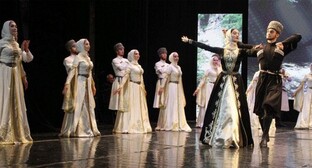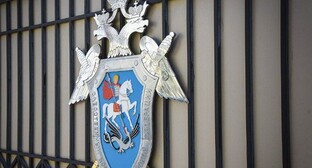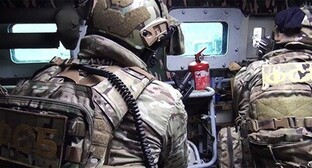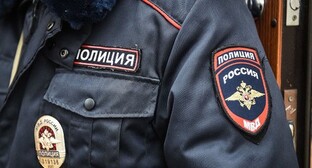31 August 2003, 21:31
Mahkamah Syariah
Or "diwan (divan) of sharias" (less frequent), the Arabic translation of Russian terms "Sharia court" or "Sharia chancellery," judicial authority established in post-revolutionary Russia for Muslims in the North Caucasus. Sharia rules were admitted to be the key source of law for Sharia courts. In the west of the region, mahkamahs syariah followed the Hanafi trend of fiqh; it was Shafi'i in the east (among Sunni Muslims); and Jafari among Shi'ite Muslims.
Restoring the Sharia in full was one of the key slogans of the 1917 revolution in the North Caucasus. The decision to set up first mahkamahs syariah was made at the first Congress of the mountain peoples of the Caucasus in Vladikavkaz in May 1917 and the first Congress of the Terek peoples in Mozdok in January 1918. City courts (Arab. mahakim/dawawin al-madina) were established in Vladikavkaz, Grozny, Nalchik, Temir-Khan-Shura (present-day Buinaksk), and other large cities; village courts (Arab. mahakim/dawawin al-qarya) in individual settlements in the mountains, foothills, and valley. They replaced the so-called verbal and popular courts; before the revolution these had heard criminal and some land cases according to the local customary law (adat); and civil, family, and inheritance cases according to the Sharia.
In the Civil War years, these courts were transformed into military Sharia courts that played the role of martial law tribunals. "The provision on the military Sharia court" was approved in January 1919 by the Council of ministers of the Mountain People's Republic. These courts proceeded under different military regimes that replaced each other: the Turkish occupation authority, Colonel L.F.Bicherakhov, and the Voluntary Army of General A.I.Denikin. Independent on them, mahkamahs syariah in Shaykh Uzun Haji's North Caucasian emirate in the Chechen settlement of Vedeno and Dagestan settlements of Andi, Botlikh and some others performed from September 1919 to March 1920. Revolutionary Sharia courts performed in 1919-1920 on Bolshevik-controlled territories. Mahkamahs syariah were used to do away with political enemies. Thus, in July 1919 the main military Sharia court in Temir-Khan-Shura sentenced U.Buinaksky and other Soviet officials arrested by Denikin's troops to death. In turn, members of this court were shot under the Bolsheviks in March 1920, sentenced by the Temir-Khan-Shura revolutionary Sharia court.
When the Civil War was over, each Soviet autonomy had its own hierarchy of Sharia courts. Key principles of their activity were codified in "The provision on Sharia courts" of the Dagestan Revolutionary Commissariat and the Central Executive Committee of the Dagestan Autonomous Soviet Socialist Republic (ASSR), June 1920 and July 1922; the Apr. 1921 provision "On the introduction of the Sharia legal procedure" in the Mountain ASSR; and laws on Sharia courts developed in the Adygey, Kabardino-Balkar and Karachay-Cherkess Republics and the North Ossetian, Chechen, and Ingush autonomous regions into which the Mountain ASSR and the Kuban - Black Sea Republic split.
Sharia justice in the Dagestan ASSR had three levels. Its lower level comprised "Sharia troikas" - village and town courts of two members and a chairman (dibir). These heard suits over division of property up to 300 rubles (in 1922 prices); civil and inheritance disputes up to 100 rubles; and minor criminal and land cases. Their decisions could be appealed at district courts (Arab. mahakim/dawawin an-nahi'ya) consisting of a "Sharia troika," a scribe, and a delivery man. The same courts heard civil and inheritance disputes; cases of property division up to 1,000 rubles; land disputes between settlements; and murders and other grave offences. The appellate authority for mahkamahs syariah at all levels was the Sharia subdivision and committees of inquiry at the People's Commissariat of Justice of the Dagestan ASSR.
The Sharia justice system in the Mountain ASSR and the autonomies it split into was different. Its key elements were not village or town courts, but district "Sharia troikas" headed by a qadi (effendi). They heard civil and inheritance disputes up to 200 rubles; thefts up to 50 rubles; and other minor criminal offences. They also drew up "vicious people lists," i.e. lists of recidivists subject to banishment beyond the region or confinement to a concentration camp. Sharia courts in Chechnya and Ingushetia had the greatest authority; their decisions could only be appealed at the Supreme Court of the Russian Soviet Federative Socialist Republic (RSFSR) one of its functions being to control the activity of mahkamahs syariah. The appellate authority for mahkamahs syariah in the Kabardino-Balkar and the Adygey Republics was the local People's Commissariat of Justice. Finally, an office of qadi in the structure of local popular courts was established instead of mahkamahs syariah in the Kuban - Black Sea Republic. Every year, Sharia courts heard 30-50 (in the North Caucasus) or 70-80 percent (in Dagestan and Chechnya) of all legal cases.
In the early 1920s, Soviet authorities tried to win the Muslim majority in the North Caucasus over to their side, admitting the Sharia was "legitimate common law" (I.V.Stalin); yet on the threshold of collectivization, the firmly established Soviet government decided to destroy the Sharia legal procedure. Mahkamahs syariah in the Mountain ASSR were several times prohibited and reopened, until finally liquidated in August-December 1922 (in present-day North Ossetia with a Muslim minority). In the remaining autonomies they were stripped of government funding in 1922-1924; Muslim communities willing to have mahkamahs syariah had to support them. Grave criminal offences, land actions, trials over care of widows and orphans, and suits with one side refusing to apply to the Sharia court were transferred to popular courts. In January 1925, mahkamahs syariah were abolished in the Adygey and Kabardino-Balkar Republics; in January 1926 in Ingushetia and Chechnya; and in April-October 1927 in Dagestan. In 1928, a new chapter was introduced to the RSFSR Criminal Code, "On crimes constituting tribal vestiges." Under its articles 203-204, those exposed as mahkamah syariah members were placed in a concentration camp for one year.
Forcible collectivization of Muslim peasants and persecution of mahkamahs syariah caused a tide of enduring peasant upheavals. The biggest of them are: the 1928-29 movements in Kabarda (the Baksan and Verkhny Kurp "cases"); the 1930 rebellions in Big Karachay, Dagestan, and Northern Azerbaijan (the Didoi and Khnoi riots; the sheikh Shtulsky "case"); and the revolts of mountain people in Checheno-Ingushetia and Northern Dagestan in 1934-36 and 1940-42. One of the key demands of the rebels was to restore Sharia courts. The rebellions were cruelly suppressed by the Red Army backed by units of the People's Commissariat of Internal Affairs (NKVD) and special units. In 1944, Chechens, Ingush, Karachays, and Balkars, were deported to Middle Asia and Kazakhstan. In spite of repressions, however, Sharia courts continued to operate secretly in the 1930-50s in many rural districts in the North Caucasus and even in the Middle Asia exile.
After the break-up of the USSR, Sharia courts have been restored as part of the Muslim revival movement. A few dozens of them have been established in rural and urban Muslim communities in Dagestan and Chechnya; sporadically in Adygea, Karachay (Mozdok), Kabarda (Nalchik), and North Ossetia (Vladikavkaz). Russian Criminal Code articles 212 and 235 that viewed application of Sharia rules as equivalent to a grave crime were abolished in 1996, but Sharia courts have never been acknowledged in Russia. They were legalized only in the Chechen Republic of Ichkeria where Sudan's criminal code was borrowed in 1996, which basically rests on Sharia rules; and in Ingushetia where a law on justices of the peace was passed in December 1997, which bound them "to be guided by adat and Sharia rules" (article 3). Unlike the 1920s, the Sharia court is nowadays mostly represented by the imam (dibir/effendi) of a cathedral mosque who chairs Friday meetings of the community elders and performs as the local qadi. These courts usually confine themselves to hearing minor criminal and matrimonial and domestic cases, as well as notarial records of wills. Alongside Sharia courts, Muslims in the North Caucasus also have Russian popular and public courts of arbitration.




